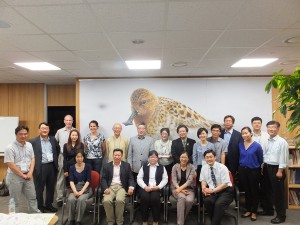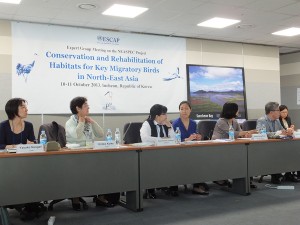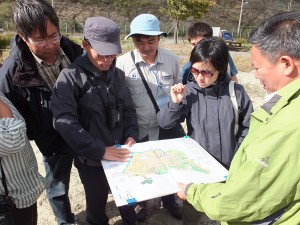The North-East Asian Sub-regional Programme for Environmental Cooperation (NEASPEC) organized the Expert Group Meeting (EGM) Conservation and Rehabilitation of Habitats for Key Migratory Birds in North-East Asia on 10-11 October 2013 in Incheon, Republic of Korea, to bring together national experts and other stakeholders to review subregional and national challenges related to the conservation of migratory bird species and their habitats; and to develop the implementation plan for the project components including joint surveys and studies, capacity building on habitat management, strategies for habitat conservation and rehabilitation, and awareness raising on habitat conservation.
The EGM gathered national focal points for this project and national experts from China, Japan, Mongolia, Republic of Korea, and the Russian Federation (via video link). The East Asia-Australasian Flyway Partnership (EAAFP) was represented by several staff and EAAFP focal points from concerned countries were also present.
The Meeting shared information on the details of the three NEASPEC flagship species: Black-faced Spoonbill, Hooded Crane, White-naped Crane, including protection status, population size, migratory routes, major threats, monitoring actions and methodology. Major threats shared at the Meeting include changing habitat conditions and population status from the change of land use, human disturbance, natural climatic variance and water management practices.
The Meeting reviewed the proposed survey’s objectives, which include selecting key sites for conservation of target species; undertaking a comprehensive survey for the development of a conservation plan; and establishing a subregional monitoring scheme and information sharing network.
The Meeting reviewed the proposed criteria for target sites, which include sites enlisted under international programmes (including EAAFP Network Sites; sites requiring urgent rehabilitation and management through international support; and sites requiring improved local community involvement as a key condition. After reviewing the criteria, the Meeting agreed to pay particular attention to scientific significance; strong relevance to international cooperation and implications of local community participation. On the basis of these recommended criteria, the Meeting identified the target sites as follows:
• Black-faced Spoonbills: Xingrentuo/Yuanbaotuo at Liaoning (China); Hakata Bay (Japan); and Incheon (ROK)
• Hooded Cranes: Lindian (China); Izumi (Japan); and Cheonsu Bay (ROK)
• White-naped Cranes: Dauria International Protected Area and adjacent territories (including Onon for Mongolia and Dalai Lake for China) of Dauria ecoregion (China, Mongolia and Russian Federation); and Muraviovka Park for Sustainable Land Use and/or Amurskiy wildlife refuge (Russian Federation)
A joint study will focus on transboundary areas including Dauria International Protected Area (DIPA-China, Mongolia and the Russian Federation) and the Korean Demilitarized Area (DPRK and the ROK). The final confirmation of selecting DIPA is subject to the consultation with the national focal point of the Russian Federation. With regard to the study at the DMZ, the Meeting recommended efforts to actively explore the possibility of the involvement of DPRK in the joint study.







